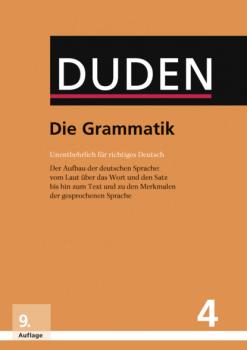Сделай Сам
Различные книги в жанре Сделай СамThe Song Maker - A Collection of Poems
“The Song Maker” is a brand new collection of poetry by American lyric poet Sara Teasdale (1884–1933). Featuring her famous «Love Songs» collection alongside «Rivers to the Sea». Teasdale produced numerous volumes of poetry in her career, most of which were both well received critically and economically successful. She was awarded the Pulitzer Price for her poetry collection “Love Songs” in 1917, which was the first of its kind. A fantastic collection of timeless poems not to be missed by poetry lovers of all ages. Contents include: “Helen of Troy and Other Poems”, “Rivers to the Sea”, “Love Songs”, and “Flame and Shadow”. Ragged Hand is proudly publishing this brand-new collection of classic poetry complete with an introductory excerpt by William Lyon Phelps.
My Voice - A Collection of Poems
Oscar Fingal O'Flahertie Wills Wilde (1854–1900) was an Irish poet and playwright who became one of the most popular in London during the 1880s and 1890s. Well-known for his sharp wit and extravagant attire, Wilde was a proponent of aestheticism and wrote in a variety of forms including poetry, fiction, and drama. He was famously imprisoned for homosexual acts from 1895 to 1897 and died at the age of 46, just three years after his release. This book contains a brand-new collection of some of Wilde's best poetry, including the titular “My Voice”. A fantastic collection of poetry by one of the nineteenth century's most notable poets not to be missed by fans and collectors of Wilde's wonderful work. Contents include: “Canzonet”, “Amor Intellectualis”, “Flower of Love”, “Vita Nuova”, “A Vision”, “Ave Imperatrix”, “Under the Balcony”, “Rome Unvisited”, “Easter Day”, “The Grave of Shelley”, “Her Voice”, “Camma”, “The Grave of Keats”, “Fantaisies Décoratives – Le Panneau”, “The Burden of Itys”, etc. Other notable works by this author include: “Picture of Dorian Gray” (1890), “Salome” (1891), and “The Importance of Being Earnest” (1895). Ragged Hand is proudly publishing this brand-new work complete with a specially-commissioned new biography of Oscar Wilde.
The Ballad of Reading Gaol
Originally published in 1898, “The Ballad of Reading Gaol” is a poem written by Oscar Wilde. Composed after his release from the titular prison whilst he was in exile in Berneval-le-Grand, the poem deals with the hanging at Reading Goal of Charles Thomas Wooldridge, a 30-year-old man who was imprisoned for cutting his wife's throat. Within the poem, Wilde narrates the execution in full and explores the brutal nature of the punishment that all inmates must endure. Oscar Fingal O'Flahertie Wills Wilde (1854–1900) was an Irish poet and playwright who became one of the most popular in London during the 1880s and 1890s. Well-known for his sharp wit and extravagant attire, Wilde was a proponent of aestheticism and wrote in a variety of forms including poetry, fiction, and drama. He was famously imprisoned for homosexual acts from 1895 to 1897 and died at the age of 46, just three years after his release. Other notable works by this author include: “Picture of Dorian Gray” (1890), “Salome” (1891), and “The Importance of Being Earnest” (1895). Ragged Hand is proudly republishing this classic poem now complete with a specially-commissioned new biography of the author.
Muthanna / Mirror Writing in Islamic Calligraphy
Muthanna, also known as mirror writing, is a compelling style of Islamic calligraphy composed of a source text and its mirror image placed symmetrically on a horizontal or vertical axis. This style elaborates on various scripts such as Kufic, naskh, and muhaqqaq through compositional arrangements, including doubling, superimposing, and stacking. Muthanna is found in diverse media, ranging from architecture, textiles, and tiles to paper, metalwork, and woodwork. Yet despite its centuries-old history and popularity in countries from Iran to Spain, scholarship on the form has remained limited and flawed. Muthanna / Mirror Writing in Islamic Calligraphy provides a comprehensive study of the text and its forms, beginning with an explanation of the visual principles and techniques used in its creation. Author Esra Akın-Kıvanc explores muthanna's relationship to similar forms of writing in Judaic and Christian contexts, as well as the specifically Islamic contexts within which symmetrically mirrored compositions reached full fruition, were assigned new meanings, and transformed into more complex visual forms. Throughout, Akın-Kıvanc imaginatively plays on the implicit relationship between subject and object in muthanna by examining the point of view of the artist, the viewer, and the work of art. In doing so, this study elaborates on the vital links between outward form and inner meaning in Islamic calligraphy.
Meie mesilased. Tuhat tüdrukut tagaõues
"Ahsoo, kõik töömesilased on tüdrukud?! Oh, ma ei teadnudki!" On nii palju seda, mida me mesilastest ei tea. Kuidas nad suhtlevad? Mida tähendab neile kokkukuuluvus? Filosoofilist mõtteainest ja paralleele inimeste eluga jagub. Peale selle annab see raamat võimaluse – vähemasti mõttemänguna – asuda mesilasi pidama. Kui kallis on inventar? Mis kuudel on töökoormus kõige suurem? Mida meega peale hakata? Kuidas teha endale meeaed ja -lilleaas? Muide, see imeline pilt, mille valisime raamatu kaanele, ei ole raps. See on põldsinep. Aga rapsipõldudest, putukamürkidest ja sellest, miks mesilaste hukkumine on ohtlik meile kõigile – sellestki tuleb siin juttu. Raamatu autor Krista on üles kasvanud mesitarudega maaperes. Kolinud siis linna ja hakanud ajakirjanikuks, nägi ta kord lennureisil hingeminevat filmi … ja leidis end elupöörde järel maalt, isatalust. "Millega te siis tegelema kavatsete hakata?" küsis töötukassa nõustaja. "Ma teen mesila!" vastas Krista hooga, imestades isegi, kust see mõte nüüd tuli.









